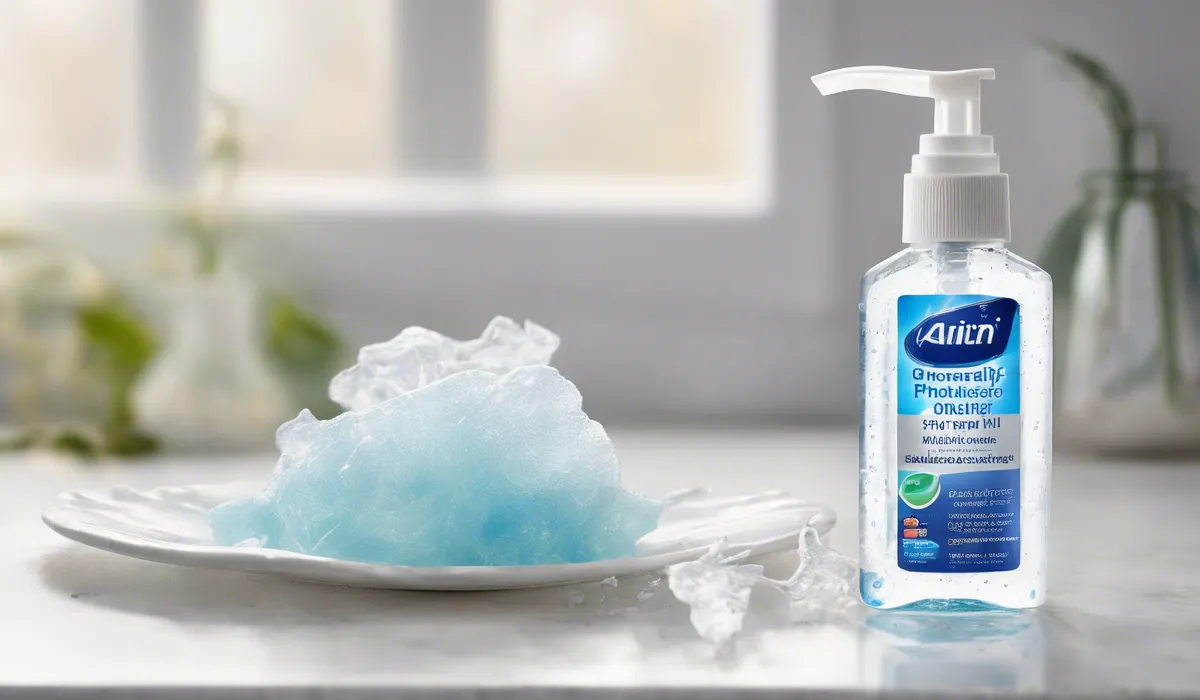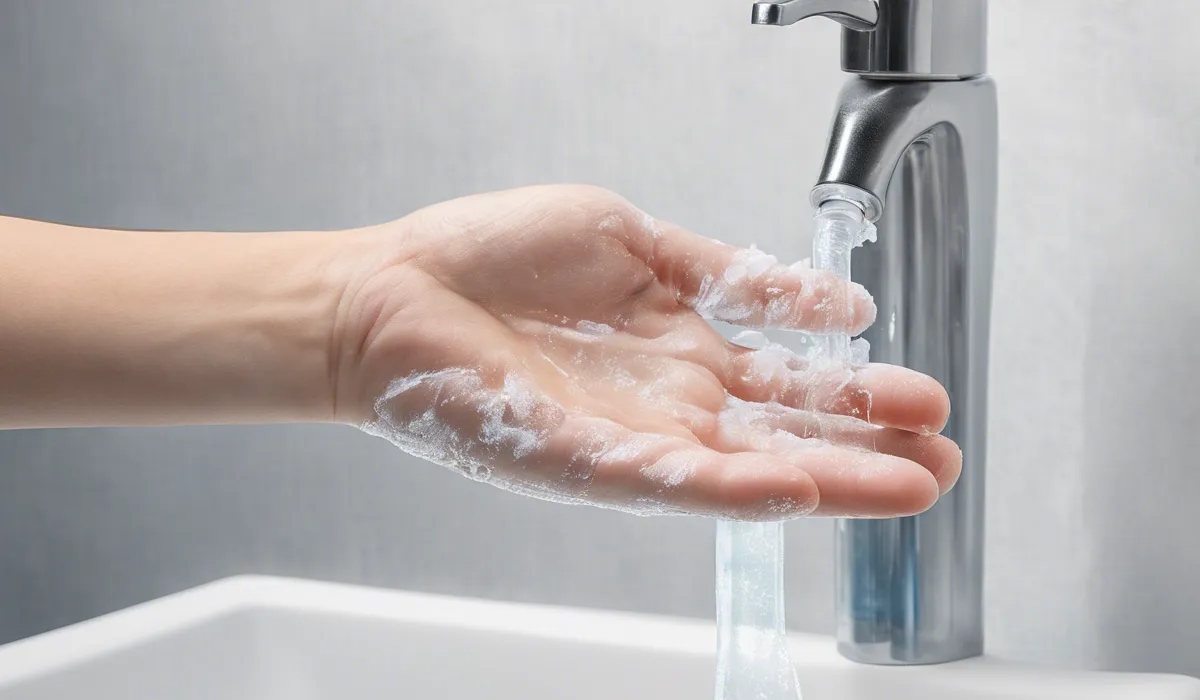Hand sanitizer can kill some mold species due to its alcohol content, but it is not a recommended solution for mold remediation. It is less effective than specialized mold removal products and may not prevent mold regrowth.
Hand Sanitizer and Its Ingredients

Definition of Hand Sanitizer
Hand sanitizer is a liquid, gel, or foam designed to eliminate germs on the hands when soap and water are not available.
Its primary purpose is to reduce the number of microorganisms to a safe level, quickly and conveniently.
Role of Alcohol in Hand Sanitizers
Alcohol acts as the critical ingredient in hand sanitizers, effectively destroying various pathogens by breaking down cell membranes and denaturing proteins. It is efficient and fast-acting, making it a popular choice in hygiene products.
Types of Alcohol Used: Ethanol vs. Isopropanol
Hand sanitizers typically contain either ethanol or isopropanol. Ethanol, also known as ethyl alcohol, is common in personal care products, while isopropanol, or isopropyl alcohol, is a potent alternative often used in healthcare settings.
Other Common Ingredients in Hand Sanitizers
Besides alcohol, hand sanitizers may include moisturizers like glycerin to prevent skin dryness, thickeners to achieve the desired consistency, and sometimes fragrances to improve the scent.
Mechanism of Action of Hand Sanitizers on Microorganisms
Hand sanitizers work by disrupting the lipid membranes of bacteria and viruses, leading to cell lysis and death. The alcohol content quickly evaporates, leaving hands dry and sanitized.
Effectiveness of Hand Sanitizer Against Mold

Defining Mold and Its Characteristics
Mold is a type of fungus that thrives in moist environments and reproduces through spores.
It can grow on various surfaces and is known for its resilience and ability to survive under harsh conditions.
Difference Between Bacteria and Mold Resistance
Bacteria are typically single-celled organisms with simpler structures, making them more susceptible to alcohol-based sanitizers.
In contrast, mold’s complex structure and spore production make it more resistant to such treatments.
Studies and Research on Hand Sanitizer’s Impact on Mold
Research indicates that while hand sanitizer can kill some mold species, its effectiveness varies.
The high concentration of alcohol may neutralize mold on the surface, but it often fails to eradicate mold completely.
Limitations of Hand Sanitizers in Killing Mold Spores
Hand sanitizers are less effective against mold spores, which can survive harsh environments and remain dormant until conditions are right for growth. Thus, they are not reliable for thorough mold remediation.
Situations Where Hand Sanitizer May Reduce Mold Presence
In some situations, like cleaning small patches of mold on hard, non-porous surfaces, hand sanitizer might help reduce mold presence temporarily. However, it should not be seen as a long-term solution.
Alternatives and Complementary Measures for Mold Control

Proper Mold Remediation Techniques
Effective mold control involves identifying the source of moisture, removing mold with appropriate cleaning agents, and ensuring complete drying of the area to prevent regrowth.
Use of Fungicides and Mold-Killing Products
Specialized fungicides and mold-killing products are formulated to target the structure of mold and its spores, offering a more reliable solution than hand sanitizer for mold issues.
Preventative Measures to Inhibit Mold Growth
Preventing mold involves controlling humidity levels, ensuring proper ventilation, and promptly addressing water leaks or spills. Keeping environments dry and well-maintained is crucial in deterring mold growth.
Importance of Cleaning and Drying Surfaces
Cleaning and thoroughly drying surfaces is essential in mold prevention. Regular cleaning routines disrupt mold’s ability to establish itself, while drying prevents the damp conditions mold requires to grow.
Recommendations for Mold-Sensitive Environments
In environments where mold can pose significant health risks, such as hospitals or homes with mold-sensitive individuals, rigorous cleaning protocols and the use of air purifiers are recommended to maintain mold-free conditions.
FAQs About Hand Sanitizer and Mold
Can hand sanitizer kill mold?
Hand sanitizer can kill some mold species due to its alcohol content, but it is not as effective as specialized mold removal products.
Is hand sanitizer a good solution for mold remediation?
No, hand sanitizer is not a recommended solution for mold remediation as it may not prevent mold regrowth and is less effective than products designed for mold removal.
Will hand sanitizer prevent mold from coming back?
Hand sanitizer is unlikely to prevent mold regrowth as it does not address the underlying moisture issues that allow mold to thrive.
Can I use hand sanitizer to clean mold off surfaces?
While hand sanitizer may kill some mold on surfaces, it is not recommended for cleaning mold due to its potential ineffectiveness and inability to prevent future growth.
What should I use instead of hand sanitizer to remove mold?
It is best to use specialized mold removal products or a solution of bleach and water, following safety guidelines, to effectively remove mold and prevent its return.
Final Thoughts
Hand sanitizer, with its alcohol content, has some efficacy against certain mold species. However, it is not the advised method for addressing mold issues.
Specialized mold removal products are more effective and better at preventing future mold growth, making them the preferred choice over hand sanitizer for mold remediation tasks.
